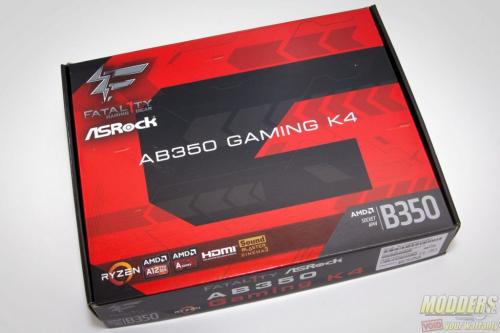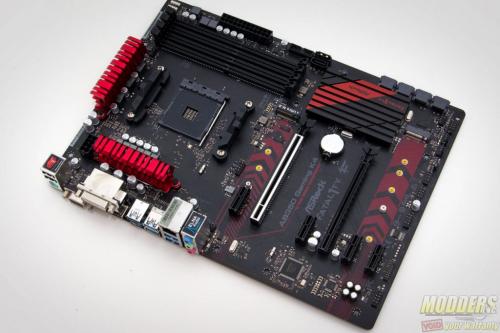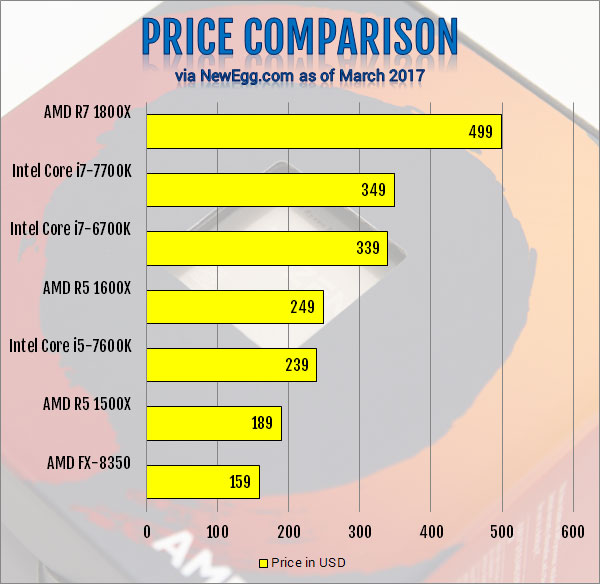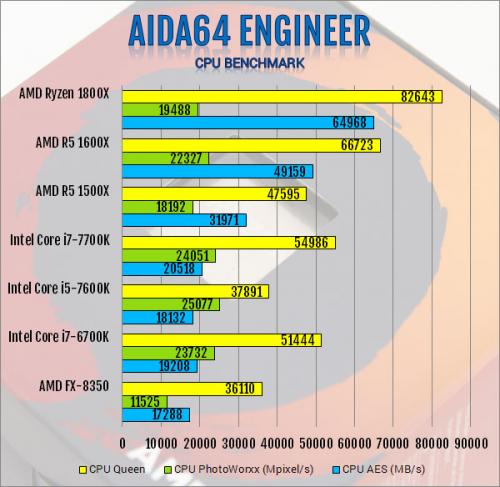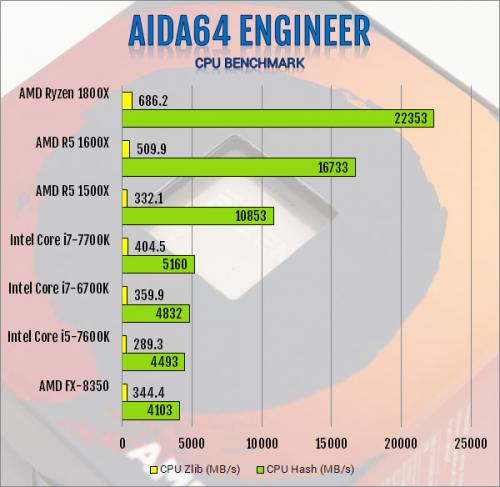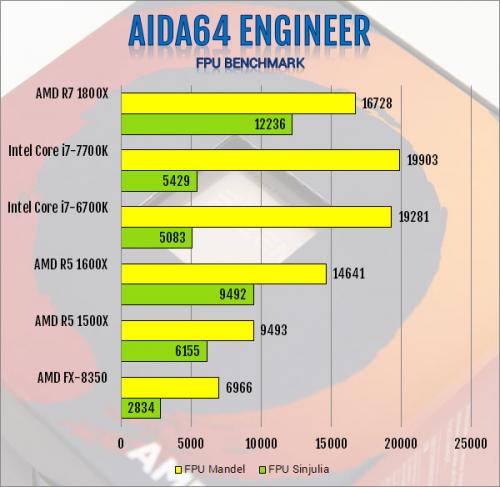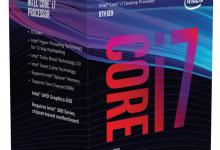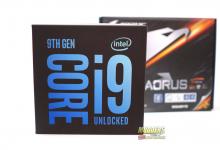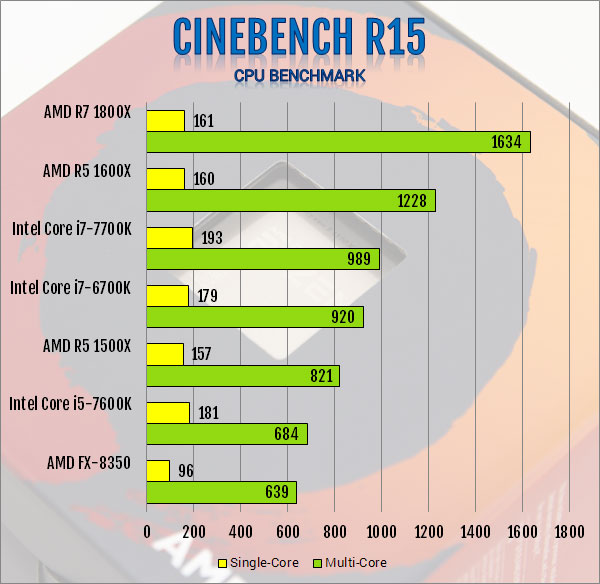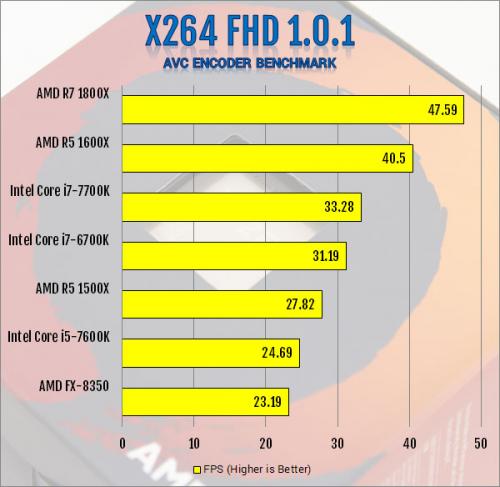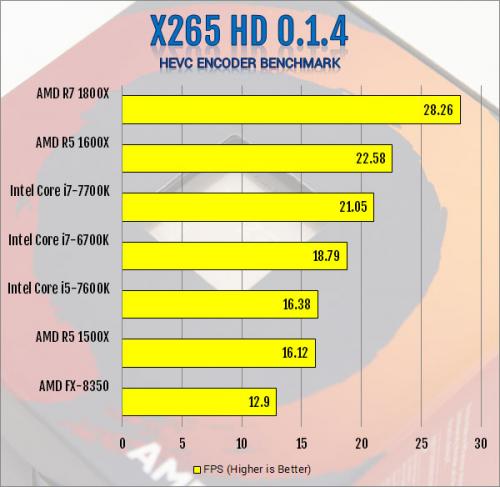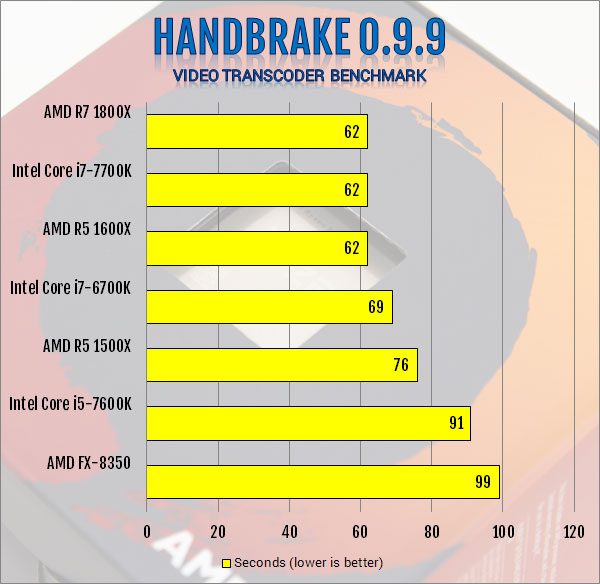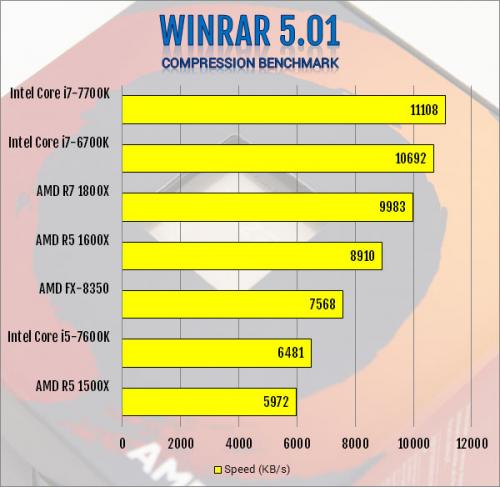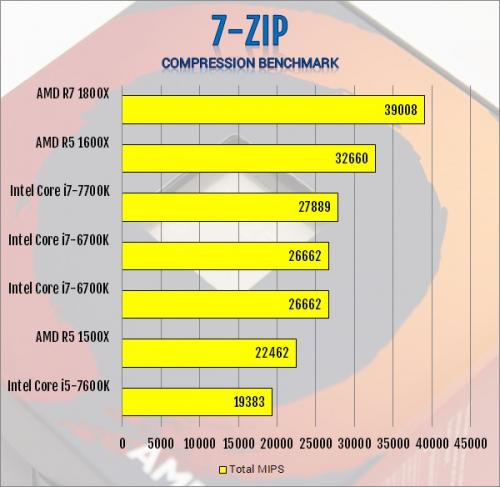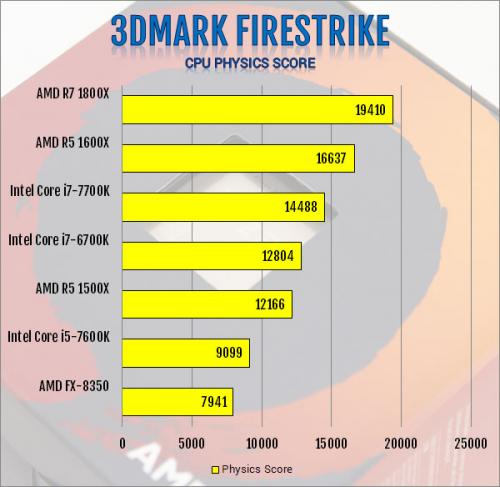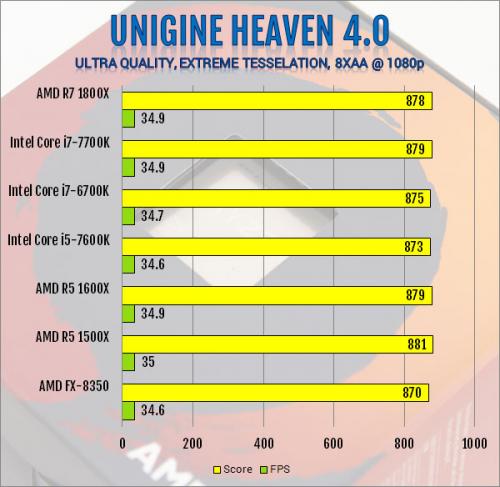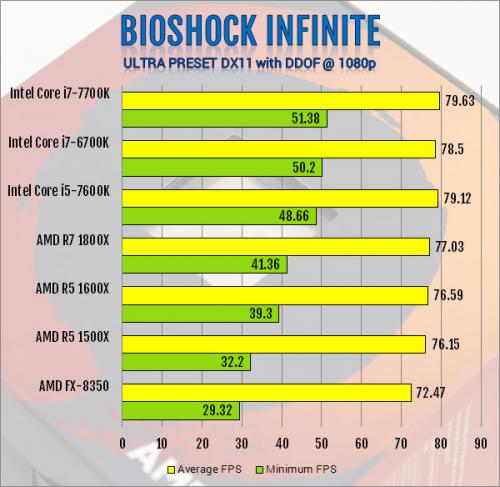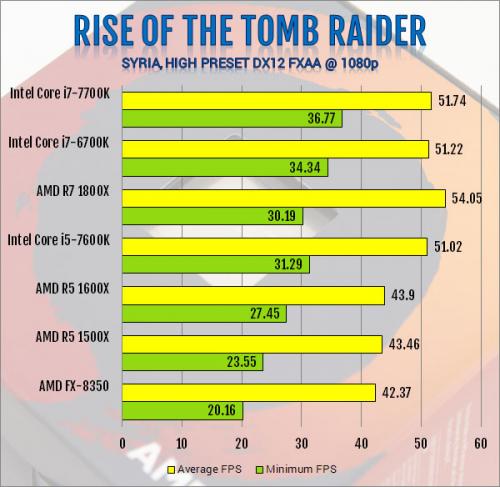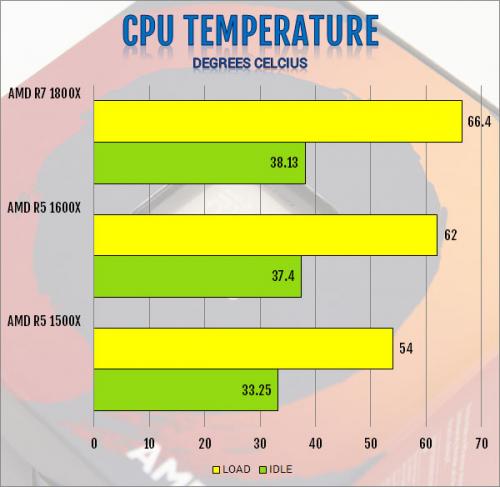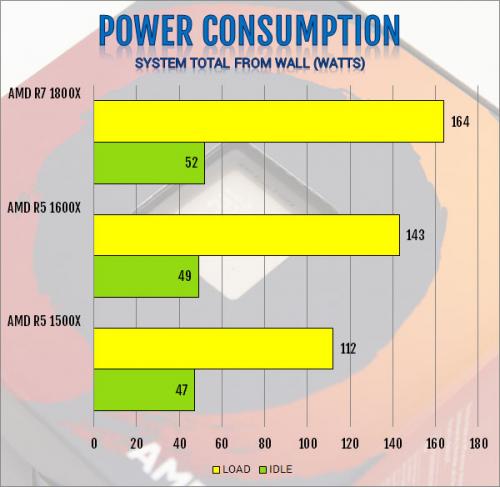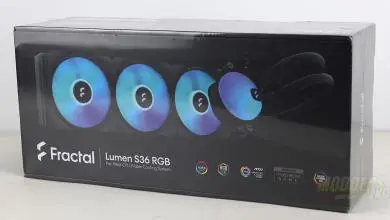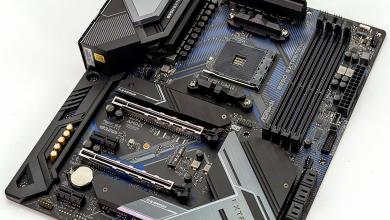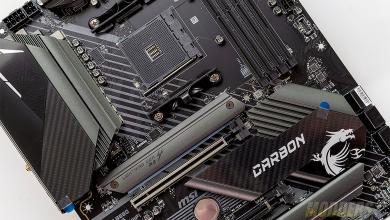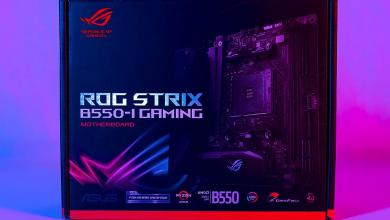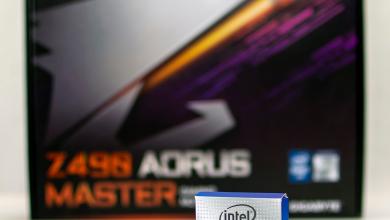AMD R5 1600X 6-Core and R5 1500X 4-Core AM4 CPU Review
Test System and Benchmarks
| Processor | AMD R5 1600X, R5 1500X, R7 1800X, FX-8350, Intel Core i7-7700K, i7-6700K, i5-7600K |
| CPU Cooler |
AMD Wraith MAX |
| Power Supply |
Corsair HX850W 80 Plus Gold PSU |
| Memory | Corsair Vengeance LP 2x8GB @ 2666MHz CL16, Mushkin Stealth 2x4GB DDR3 @ 2133MHz CL11 (FX-8350) |
| Storage | OCZ Agility 4 256GB SSD (OS) |
| Graphics | Gigabyte GTx 960 Windforce 3x OC |
| Motherboard(s) | ASRock AB350 Gaming K4 (2.20), Aorus Z270X-Gaming 5 (F4), MSI B250M-Mortar, ASUS M5A99FX EVO R2.0 (2501) |
| Operating System | Windows 10 Pro x64 (1704) |
Before proceeding with the regular benchmarks, we should take stock of the current prices. The AMD Ryzen 5 1600X is being marketed to go head to head against the i5-7600K, and the Ryzen 5 1500X is aimed squarely at the Intel Core i5-7400. The 6th generation flagship mainstream desktop i7-6700K processor has not moved out of place price-wise, sitting at $339. while the new 7th generation flagship i7-7700K has an MSRP of $349 USD.
CPU and Memory Benchmarks
The AIDA64 suite has various benchmarks for CPU, FPU and memory testing: CPU Queen is an integer benchmark that tests branch prediction and misprediction penalties. CPU PhotoWorxx tests the SIMD integer arithmetic execution units of the CPU and the memory subsystem. CPU ZLib is a compression benchmark that tests the combined CPU and memory performance. CPU AES is a multi-core encryption benchmark that uses Advanced Encryption Standard data encryption. CPU Hash is an integer benchmark that measures performance using SHA1 hashing algorithm.
Using AIDA64 as well, memory and cache performance is benchmarked as well as FPU. FPU Mandel measures double precision FP, FPU SinJulia measures extended precision floating point.
MAXON’s Cinebench R15 runs two sets of benchmarks, a processor test for the CPU and an OpenGL test for the graphics processor. The 3D rendering workload is based on Maxon’s Cinema 4D, a program utilized by movie production studios world wide for special effects so it is a semi-synthetic test closer to real-world 3D graphics benchmarking.
Multimedia Benchmarks
x264 is a popular free software library for encoding video streams into the H.264/MPEG-4 AVC format. x264 FHD measures how efficient a system is in encoding H.264 video and produces results in frames-per-second. H.265/HEVC video encoding is the future of video able to compress significantly larger resolution videos including 4K and make streaming feasible. The downside is that hardware support is still few and far between so processing requirement is steeper than current H.264/AVC standards. x.265 is an open-source implementation of the H.265 standard and x.265 HD benchmark tests the CPU’s ability to process an HEVC video.
Handbrake is free open-source video transcoder that can convert various video file formats to compatible video files for other typical media viewing applications such as in an iPhone or Android tablet. A 52:55 1.1GB H.264 MKV file was used converted to the built-in iPod Preset (5G Support), then manually timed. The results are in seconds and the lower number is the better result.
Compression Benchmarks
7-zip is an open source (GNU) compression program utilizing LZMA method as the default. WinRAR on the other hand is a Windows version of a popular compression software created by Eugene Roshal in 1993, widely used for its flexibility. Both have built in benchmarks that measure the system’s compression and decompression capability.
Gaming Benchmarks
Futuremark’s 3DMark is a semi-synthetic gaming benchmark that calculates both graphics and CPU-bound physics in a controlled series of tests and provides scores that can be compared with other gaming platforms. Unigine Heaven is a synthetic benchmark that is completely GPU bound for testing possible PCI-E graphics performance inconsistencies.
Temperature and Power Consumption:
AMD has “fixed” the temperature readings of Ryzen with the latest Ryzen Master software, now measuring the true junction temperature. Tested with the silent Wriath MAX RGB fan, the temperatures barely reached the idle readings from the pre-update software.
Final Thoughts:
AMD is at their most aggressive yet with the release of the Ryzen 5 series, priced directly against Intel’s current i5 offerings. Coming into the match, AMD has a clear core-count advantage that is now much more meaningful compared to the multi-core Bulldozer/Piledriver CPUs of previous generations. AMD’s argument is solidified further by an up-to-date platform that competes toe to toe with Intel’s B250 motherboards and coming out on top due to the unlocked advantage, providing additional CPU and memory performance when necessary.
These new Ryzen 5 CPUs show their skills readily in encoding benchmarks, which make them ideal for streamers using a single PC while playing. While the performance improvements promised by AMD are still on the horizon, the important part is that it definitely coming, as evidenced by the last few community updates they issued. In terms of value up against a locked Intel i5 plus a B250 chipset motherboard versus an unlocked Ryzen 5 vs a B350 chipset motherboard, it is still somewhat a close match. The overclockability of the platform certainly helps, as the B250 chipset even with the latest generation Intel processors are limited to 2400MHz DDR4. The price gap between a 2400MHz module and a 3200MHz module right now is within $10 to $20 dollars so it is not a heavy burden to opt for the more expensive kit. The B350 chipset otherwise, offers plenty of the same advantages as Intel’s B250 chipset, having PCIe x4 NVME support and USB 3.1 Gen.2 support natively.
What it comes down to however is upgrade-ability and well-roundedness. The average PC user now is more of a prosumer, having their hands busy with many activities and their PC involved with it. Encoding, multimedia, and gaming are all just par for the course and all sub-$250 CPU’s are expected to handle these activities with ease. Since AMD has promised that the AM4 socket will live on for a while, the AMD platform also opens up the user to the possibility of upgrading and growing with their build in the future, which the Intel most likely will not. Not for the same price.
